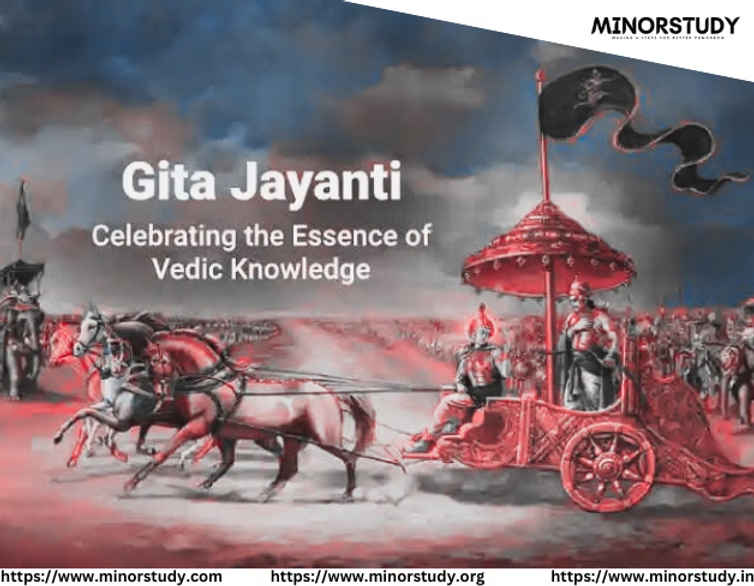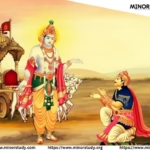Bhagavad Gita Jayanti: Overview
Bhagavad Gita Jayanti marks the day when the sacred scripture, the Bhagavad Gita, was revealed to Arjuna by Lord Krishna during the Mahabharata war on the battlefield of Kurukshetra. This day is observed on the Shukla Ekadashi of Margashirsha month (November-December) according to the Hindu calendar. It is a day of great spiritual significance for Hindus worldwide.
- Key Facts about Bhagavad Gita Jayanti
- Significance of Bhagavad Gita Jayanti
- How Bhagavad Gita Jayanti is Observed
- Key Teachings of the Bhagavad Gita
- FAQs on Bhagavad Gita Jayanti
- Timeline of the Bhagavad Gita
- Wishes and Blessings for Bhagavad Gita Jayanti
- Important Points about Bhagavad Gita Jayanti
- Conclusion
The Bhagavad Gita, often referred to as the Gita, is a 700-verse scripture that forms part of the Mahabharata’s Bhishma Parva. It provides profound insights into life, duty (Dharma), righteousness, and devotion (Bhakti).
Key Facts about Bhagavad Gita Jayanti
Aspect | Details |
Significance | Celebrates the teachings of the Bhagavad Gita, a spiritual guide for life and enlightenment. |
Date | Shukla Ekadashi in Margashirsha month (falls in November or December). |
Historical Context | Lord Krishna imparted the Gita’s teachings to Arjuna on the battlefield of Kurukshetra. |
Key Teachings | Focuses on Dharma (duty), Karma (action), Bhakti (devotion), and Jnana (knowledge). |
Observances | Chanting of the Gita, prayers, discourses, and meditation sessions. |
Relevance Today | Provides guidance for facing modern life’s challenges and attaining inner peace. |
Significance of Bhagavad Gita Jayanti
Spiritual Guidance: The Gita addresses fundamental questions of life, duty, and purpose, offering timeless wisdom that is relevant across ages.
Universal Philosophy: It emphasizes selfless action, devotion to God, and the pursuit of knowledge as paths to liberation.
Celebrating Lord Krishna’s Teachings: The day honors Krishna’s role as a divine guide and Arjuna’s transformation through wisdom and clarity.
Inspiration for Humanity: Leaders like Mahatma Gandhi, Albert Einstein, and others have praised the Bhagavad Gita for its philosophical depth.
How Bhagavad Gita Jayanti is Observed
Reading and Recitation: Devotees read or chant verses from the Gita and reflect on their meanings.
Discourses: Scholars and spiritual leaders give discourses on the Gita’s teachings and their practical application.
Puja and Rituals: Temples dedicated to Lord Krishna organize special pujas and yajnas to celebrate the day.
Meditation and Reflection: People engage in meditation and self-reflection to imbibe the teachings of the Gita.
Charitable Acts: Many devotees undertake acts of charity, aligning with the Gita’s emphasis on selfless service.
Key Teachings of the Bhagavad Gita
Dharma (Duty): Fulfill your responsibilities with sincerity without attachment to the results.
Karma Yoga (Selfless Action): Act selflessly, focusing on the work itself rather than its outcomes.
Jnana Yoga (Knowledge): Seek spiritual knowledge to understand the self and the universe.
Bhakti Yoga (Devotion): Surrender to God with unwavering devotion and faith.
Equanimity: Maintain balance in success and failure, joy and sorrow.
FAQs on Bhagavad Gita Jayanti
Why is Bhagavad Gita Jayanti celebrated?It commemorates the day Lord Krishna delivered the teachings of the Gita to Arjuna, guiding him to overcome his moral dilemma.
What are the main teachings of the Bhagavad Gita?The Gita teaches selfless action (Karma Yoga), devotion (Bhakti Yoga), knowledge (Jnana Yoga), and the pursuit of righteousness (Dharma).
How is Bhagavad Gita Jayanti observed?Devotees recite the Gita, attend discourses, perform pujas, and reflect on its teachings through meditation and selfless acts.
What is the relevance of the Bhagavad Gita today?The Gita’s teachings offer practical solutions to modern challenges, emphasizing ethical living, mindfulness, and inner peace.
Timeline of the Bhagavad Gita
Event | Details |
Dwapara Yuga | The Bhagavad Gita was revealed during the Mahabharata war in the Dwapara Yuga. |
Compilation into Mahabharata | Sage Vyasa included the Gita in the Bhishma Parva of the Mahabharata. |
Spread of Teachings | The Gita has been translated into numerous languages and inspired leaders, scholars, and saints. |
Wishes and Blessings for Bhagavad Gita Jayanti
“May the divine teachings of the Bhagavad Gita inspire you to lead a righteous and fulfilling life.”
“On this sacred day, let us embrace the wisdom of Lord Krishna and strive for peace, harmony, and selflessness.”
“Wishing you a spiritually enlightening Bhagavad Gita Jayanti. May the Gita’s teachings guide you toward truth and inner peace.”
“Let the Bhagavad Gita light your path to knowledge, devotion, and liberation.”
Important Points about Bhagavad Gita Jayanti
It highlights the eternal relevance of the Gita’s teachings in guiding humanity.
Promotes ethical living, self-realization, and devotion to God.
Emphasizes the importance of detachment and equanimity in life.
Encourages individuals to rise above material desires and connect with their spiritual essence.
Conclusion
Bhagavad Gita Jayanti is not just a religious occasion but a day to reflect on life’s purpose and the path to righteousness and self-realization. The timeless wisdom of the Bhagavad Gita continues to inspire millions around the world, offering solutions for both personal and societal challenges. By embracing its teachings, one can lead a life of peace, harmony, and fulfillment.









I was very pleased to find this web-site.I wanted to thanks for your time for this wonderful read!! I definitely enjoying every little bit of it and I have you bookmarked to check out new stuff you blog post.